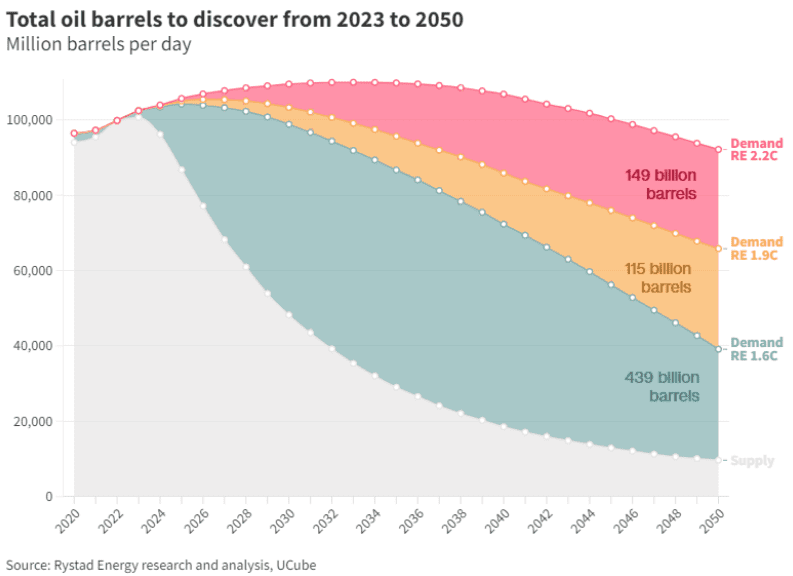Despite great uncertainty in new long-term scenarios envisioned by Norwegian energy research and intelligence firm, Rystad Energy, further investments in oil production are definitely needed to meet the next three decades of demand.
“If investments in oil production were to dry up completely, supply would drop to 10 million bpd by 2050,” Rystad Energy said. In this regard, it pointed out that further investments in oil production are required to meet demand regardless of the speed of the energy transition.
In the firm’s +Sigma scenario, which represents a slow transition (2.2°C of global warming above pre-industrial levels), oil demand remains above the current level for the next 20 years. In the -Sigma (1.6°C), a fast transition, demand peaks in the next few years and then drops rapidly. In the Mean scenario (1.9°C), a plateau occurs between 2026 and 2032, with a subsequent accelerating decline.

“Upstream oil production will need to total more than 550 billion barrels to meet demand under the 1.9°C scenario, approximately 700 billion barrels in the 2.2°C scenario and 440 billion barrels in the 1.6°C scenario,” Rystad Energy said.
Meanwhile, the International Energy Agency (IEA) sees global oil demand plateauing before the end of the decade, before giving way to the increasing prevalence of renewable energy in power generation and the adoption of electric vehicles.
The countries to contribute to oil production in the latter decades of the transition are likely to be those with cleaner burning crudes. Known for their lower sulfur content and higher combustion efficiency, these crudes are likely to be the last blends produced because they align more closely with global efforts to reduce carbon emissions and mitigate climate change impact.
Guyana has ambitions to be one of those last producers of crude oil. The country’s Minister of Natural Resources, Vickram Bharrat, said small developing countries should be those last producers because they have not expended proverbial carbon budgets as much as industrial nations. Rystad Energy has even projected that Guyana is on track to become one of the world’s largest deepwater producers in the next decade, alongside Brazil.
Even as current projections see Guyana’s oil production edging closer to 1.5 million barrels per day (b/d) in the next few years, government officials continue to push for expanded exploration to prove and underscore additional developments. Vice President Bharrat Jagdeo has said the country needs 10 floating production, storage and offloading (FPSO) vessels to sustain the development the government envisions.



